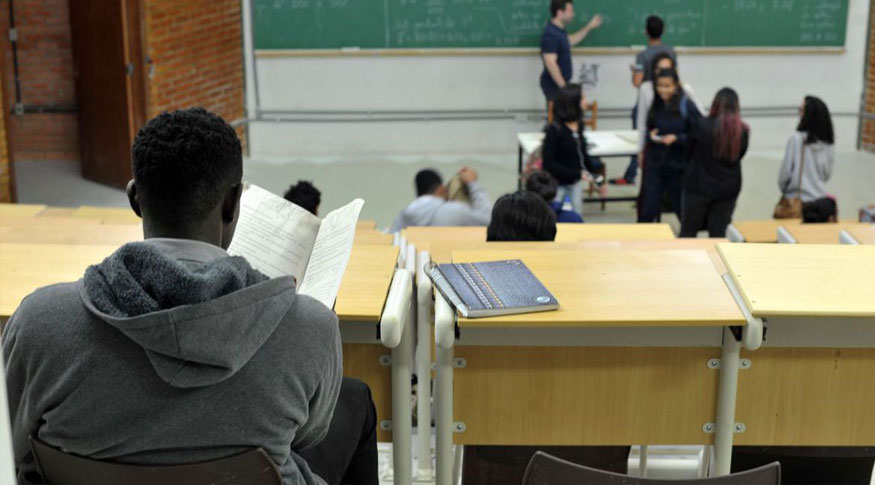Summay of Social Indicators
Eight in every ten youngsters who never attended school were unemployed in Brazil in 2019
November 12, 2020 10h00 AM | Last Updated: November 26, 2020 06h25 PM
Highlights
- The earlier young people drop out of school, the more likely they are to be unemployed.
- The proportion of young people who are neither working nor studying has decreased from 23.0% in 2018 to 22.1% in 2019.
- Northeast states have the highest proportion of young people in this situation.
- A black or brown young woman is 2.4 times more likely to be out of school or unemployed than a white young man.
- 42.8% of young people neither studying nor working had a per capita household income of up to R$ 353.50.
- School attendance increases in all age groups, mainly for children who go to daycare centers.

About 82.3% of young people aged 15 to 29 who never attended school were unemployed in 2019, according to the Summary of Social Indicators, released today (12) by the IBGE. The survey shows, for the first time, that among those who had already studied, the earlier they dropped out of school, the greater the chances of being out of work.
Of the young people who attended school aged up to 10 years old, 55% were unemployed in the previous year. This rate decreases whereas the number of years of schooling increases. In 2019, 62.6% of the young people who studied until 18 years old and over were employed.
Those data help us understand the reason why Brazil still has a high rate of young people who do not study or work. In the last year, the percentage of people in this situation decreased, changing from 23.0%, in 2018, to 22.1%, in 2019. Although the indicator improved, Brazil has a higher number of young people who do not study or work than other countries in South America, like Argentina, Uruguay and Bolivia.
“The reduction in this indicator is a result of the increase in employment-to-population ratio of young people in this period. Therefore, it is not related with the increase of education access”, explains the analyst at IBGE’s Social Indicators Division, Luanda Botelho, adding that the indicator of those who do not study or work does not have such a significant short-term change between years.
Among the Brazilian regions, the South recorded a percentage of young people who do not study or work closer to those of developed countries, mainly, in the capitals. On the other hand, in the Northeast more than 25% neither worked nor studied. In 2019, only 40.5% of young people were employed in the Northeast, while the national average was of 49.8%.
The group of young women (27.5%) had the highest figures in this indicator, whereas only 16.6% of men did not study or work. The inequality is higher comparing whites with blacks or browns. Last year, 17.0% of whites and 25.5% of blacks or browns did not study or work. This difference was bigger than in 2018, when 18.5% of whites and 25.5% of blacks or browns neither worked nor studied.
Among black or brown women, the percentage is even bigger: 32.0% did not study or work. A young black or brown woman had 2.4 more chances to be in that situation than a young white man (13.2%). Black or brown women also had disadvantage both in relation to black or brown men (18.9%) and white women (20.8%).
According to Luanda Botelho, the difference between men and women is mainly due to the access to the labor market. “Although women are more educated than men, have difficulties entering the labor market, because many of them are responsible for household chores and caretaking. They also face difficulties in the labor market, with higher unemployment rates”, explains Ms. Botelho.
In 2019, 42.8% of young people who did not study or work were in the quintile of the population with the lowest household per capita income, which represents those with income up to R$ 353.50. Only 4.7% of these young people were in the quintile of the population with the highest income.
“This result can be atributed to the family origin of those young people, and the fact that, once employed, they start to contribute to the household income. The young people who study and work had a greater participation in the quintile of the population with highest income (25.9%), followed by the young people who just worked (17.5%)”, adds Ms. Botelho.
School attendance advances at every age range
The Summary of Social Indicators also shows that, between 2016 and 2019, school attendance grew in every age range, from 0 to 17 years old.
The expansion pace of the education coverage was more accelerated, though, in daycares attended by children aged between 0 and 3 years, which achieved 35.6%, an increase of 5.2 percentage points in relation to 2016. Despite the advance, the country did not reach the 50% attendance goal established by the National Education Plan (PNE) for children aged between 0 and 3 years in daycares. The deadline is due in 2024.
Between 2016 and 2019, the percentage of students who attended the correct equivalent education level or had already concluded that level also advanced in Brazil. The indicator grew 1.6 percentage points between young people aged between 18 and 24 years, showing that 25.5% of those students had already concluded or were attending higher education, against 23.9% in 2016. The goal established by the PNE for this age range is 33%.
The survey also depicts that only 18.9% of black or brown youngsters aged between 18 and 24 years attended, in 2019, higher education. This rate was 35.7% among white youngsters. This means that a white youngster is two times more likely to attend higher education than a black or brown youngster


















